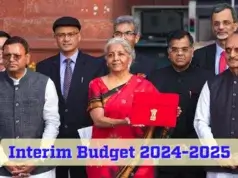
Given the challenges in the sector and huge population and other economic pressures, it may be difficult to fulfil India’s plan to become energy independent by 2030. However, if the government policies are in place and if we effectively utilise all forms of energy reserves and strike a balance between demand and supply of energy consumption, it may be possible to achieve the goal, writes Rumi Engineer, Head of Green Buildings at Godrej Green Building Consultancy Services & Head of Energy Conservation, Godrej & Boyce Ltd.
Recently, I came across an article where an international body called India’s plan to become energy independent by 2030 as “very ambitious” and “idealistic”. I have to agree that given the challenges in the sector and huge population and other economic pressures, it may be difficult to achieve the same. However, if the government policies are in place and if we effectively utilise all forms of energy reserves available to us and strike a balance between the demand and supply sides of energy consumption, it may be possible to build an energy-independent India.
As per the 12th Plan of the Planning Commission, the total domestic energy production of 669.6 MTOE will be reached by 2016-17 and 844 MTOE by 2021-22. This, however, will be enough to meet around 71 per cent and 69 per cent of expected energy consumption, with the balance to be met from imports. With rising income levels and purchasing power of Indians, the demand for individual consumption of energy will rise further.
On the industrial side, growing industrialisation will only require more energy and for the resources to meet both demands, personal and commercial, will be a great challenge.
In order to make our country energy independent, we need to address both, supply side management and demand side management.
On the supply side management, while it is essential for India to radically expand the capacities on all the fronts and all the segments of energy, equally important is the need for efficient consumption of energy for which a number of initiatives will need to be put in place. On the demand side management, studies have established the fact that over 20 per cent of energy is wasted because of inefficient end use of energy. The mismatch between demand and supply is so immense that for the next few decades, India would need to exploit all possible options to create reasonably large capacity base on the energy side.
According to a report by National Statistical Organisation, coal has a dominant position constituting about 51 per cent of India’s primary energy resources followed by oil (36 per cent), natural gas (9 per cent), nuclear (2 per cent) and hydro (2 per cent). Clearly, the reserves are not being utilised equally and, perhaps, this is one of the major reasons for price disparity and inefficiency.
 A report published by BP Energy discusses how India may become increasingly import dependent despite increased production by the year 2030. Its research shows that India’s energy mix remains relatively unchanged as coal’s dominance drops slightly from 53 per cent today to 50 per cent in 2030 while oil maintains its current 29 per cent share. What is to be noted is that fossil fuels may account for 88 per cent of Indian energy consumption even in 2030, while renewable share of consumption rises only from 2 per cent to 4 per cent. Also, oil imports rise by 152 per cent as the country’s production meets less than 10 per cent of demand by 2030.
A report published by BP Energy discusses how India may become increasingly import dependent despite increased production by the year 2030. Its research shows that India’s energy mix remains relatively unchanged as coal’s dominance drops slightly from 53 per cent today to 50 per cent in 2030 while oil maintains its current 29 per cent share. What is to be noted is that fossil fuels may account for 88 per cent of Indian energy consumption even in 2030, while renewable share of consumption rises only from 2 per cent to 4 per cent. Also, oil imports rise by 152 per cent as the country’s production meets less than 10 per cent of demand by 2030.
Therefore, we need to change the current mix of energy consumption into one that optimises each sector without pressurising any one.
The government has taken several measures to help in this process like:
Open Acreage Licensing Policy that will allow bidders to bid for blocks at any time of the year as compared with the current system which only allows periodic bidding.
Another initiative by the government is New Exploration License Policy (NELP), which was started by the government in 1999 in an effort to boost hydrocarbon exploration in the country. As per media reports, the body allocates rights to explore hydrocarbon blocks through a bidding process and has done this in nine phases so far for 360 blocks, with an investment of around $21.3 billion. This is done to encourage energy distribution.
Shale gas, which is a natural gas produced from organic-rich shale formations, has been a game-changer in the energy scene of USA. Our government was not as prompt in understanding its importance until now because though shale gas reserves may be plentiful, it costs a lot more. However, that should not stop our government from encouraging both public and private sectors to import gas shale production technology by giving incentives.
India needs to shift to non-polluting renewable sources of energy to meet its energy requirements. Renewable energy is the most sustainable form of energy that can help solve most of our current problems related to energy consumption. Renewable energy can decentralise the control of energy production thus will help to ensure stable prices and increase the security of our energy supply.
Though the new government is trying to help the sector through initiatives discussed above, what we primarily require is an integrated energy ministry. Such an entity can administer policy coordination, rationalisation and implementation as well. Given that energy reserves are limited, government must provide a scope for research and development so that technology can boost production, supply and distribution of energy.
Government should provide incentives for those who innovate or apply innovation to conserve energy and also strengthen our energy security to be prepared for the supply that is expected to rise with the fast economic growth that India is experiencing.











